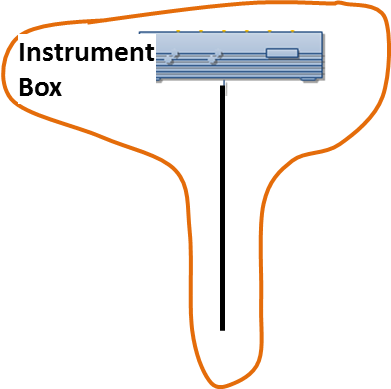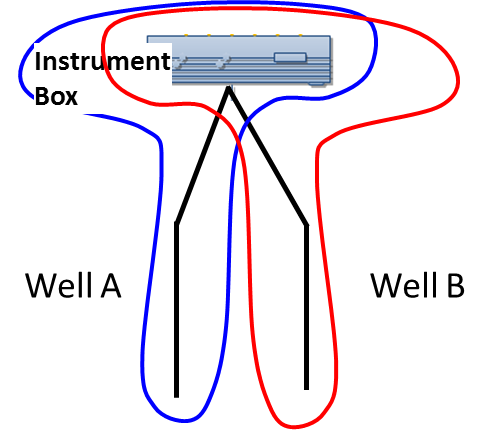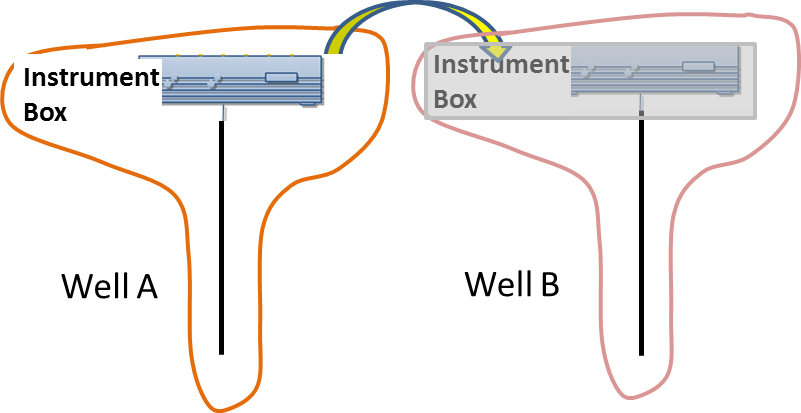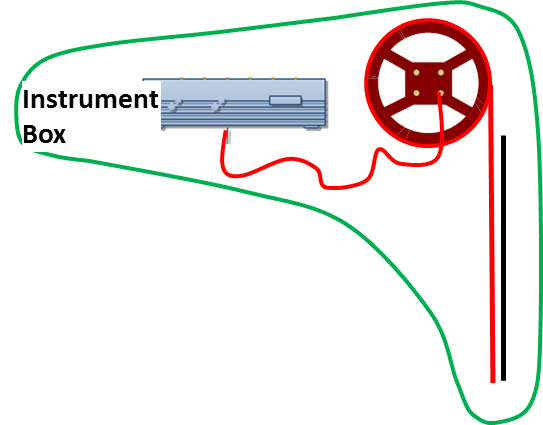14.5.2 Distributed Sensing Installed System Examples
| Topic Version | 1 | Published | 12/09/2016 | |
| For Standard | PRODML v2.0 | |||
The installed system concept is highly relevant, because all distributed measurements are directly associated with one installed system, and through that installed system the data consumer determines the instrument box and optical path for which the measurement was taken. In Figure 14.5.2-1 to Figure 14.5.2-4 , the installed system is represented by the curved boundary around the various combinations of (DTS or DAS) Instrument Box and Optical Path making the measurements at any particular time.
A typical distributed sensing (DTS or DAS) installation consists of an instrument box and a fiber (optical path). See Figure 14.5.2-1 .

However, in real life there are multiple variations on how the equipment is installed and used. The first variation can be found when one instrument box is used to take measurements from more than one optical path. See Figure 14.5.2-2 . Here, in the Optical Path Network object, it is possible to record the channel to which each optical path is connected at the instrument box.

A second example is found when the same instrument box is moved around to different locations and used to take measurements from multiple optical paths. This is sometimes known as a ‘drive-by’ instrument box. See Figure 14.5.2-3 .

From the hardware point of view, the instrument box does not change, and neither does the optical path, so these two objects previously introduced are sufficient to describe these configurations. Things get more interesting when we start dealing with the measurements obtained, which depend on the situation. As an instrument box is moved from one optical path to another, it uses different calibration settings and may generate different diagnostics information. When analyzing a distributed measurement, it is very important that the data consumer knows exactly which instrument box took the measurement and to which optical path this measurement relates. Also, it is conceivable that at some point the instrument box is upgraded for a newer model and, therefore, the new measurements are now taken with a different instrument box for the same optical path.
The most extreme example of the temporary use of a distributed installed system is when an instrument box is used for a logging operation, in which case both the instrument box installation and the optical path are temporary. See Figure 14.5.2-4 .
